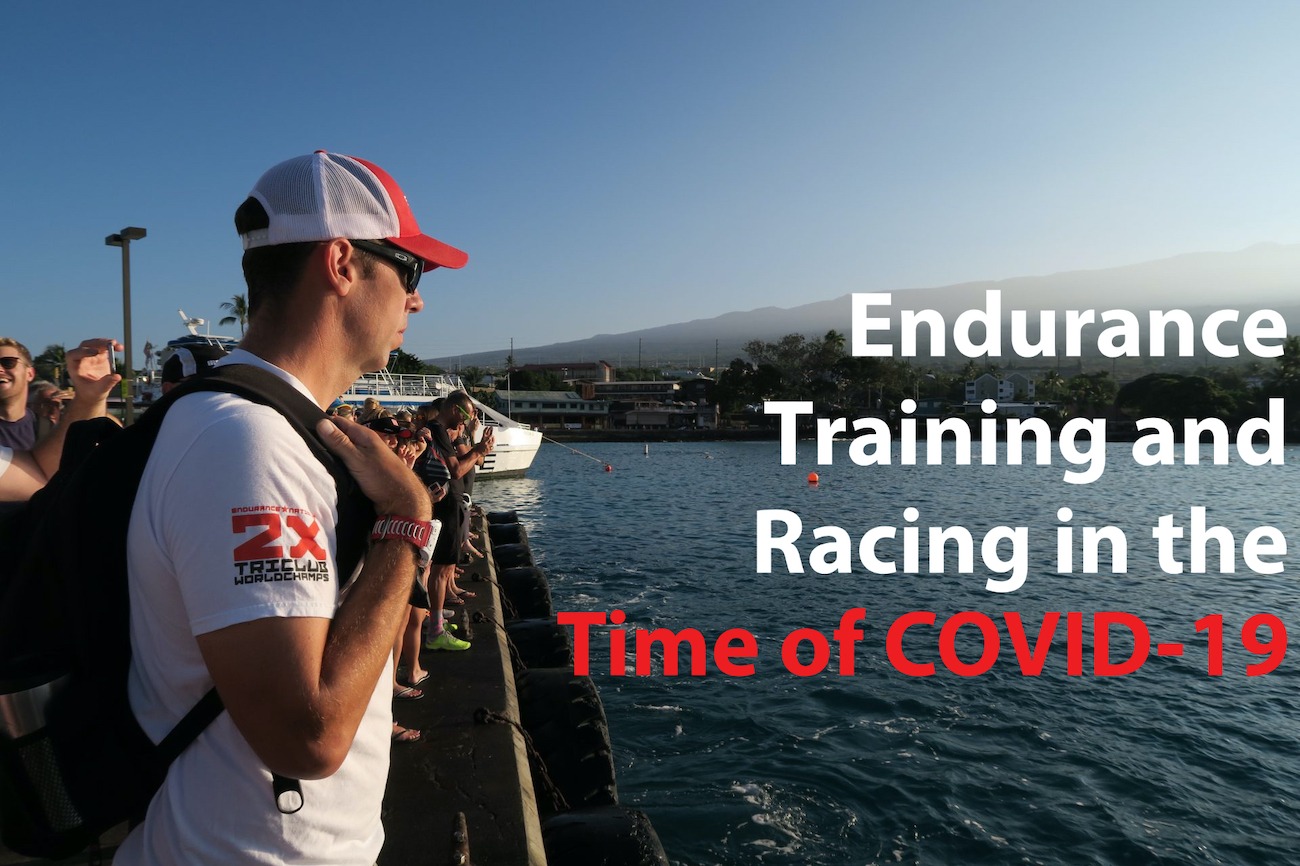
This is an open letter to the endurance community with information on how you can stay on track with your personal training and racing goals for the year while things are rapidly changing around us all.
For many of us, working out is a form of therapy, a daily “exercise” in what it means to be ourselves. Racing is an extension of that practice, and includes more than just a chance to test our progress but to connect with a community of like-minded people who share our goals and lifestyle.
Given the rapid spread of COVID-19 and the necessary health precautions each and everyone of us is being asked to take to slow the spread of the virus, our lifestyles have been completely upended. These changes are drastic and reflect not only the scope of the challenge but also the global community level response required to make a difference.
While we need to think globally and act locally, questions regarding your training and racing are totally on the table. This post can hopefully be your guide, and will be updated regularly as we add more (so bookmark it).
Disclaimer
To be 100% transparent, I am not a doctor or medical professional. I am a triathlon and endurance coach offering some guidance here for those of you who are healthy and looking for help. Seek out professional medical advice if you or someone you know needs help.

Want to Get this Guide in PDF Form? Simply sign up for the Endurance Nation newsletter and we’ll deliver a copy direct to you.
Sign Up & Get the PDF Right AwayFacebook AMA: Training & Racing vs COVID-19
Table of Contents

Staying Healthy
Much has been written online about basic precautions for staying healthy, including personal actions you can take like staying hydrated, social distancing and thoroughly washing your hands throughout the day. Should there be someone who is under self-quarantine in your home, there are even more detailed instructions available from the CDC.
For athletes, there isn’t a great deal of information readily available. If you find something, please share it online with us via email so we can update this resource.
For those of you working out who are worried about the effects of your training on your immune system, Steve Palladino at the Palladino Power Project has a great two pager including information on the relationship between exercise/workout stress and the risk of Illness that also includes some recommendations (online here).
You can also see the webinar by the folks at Stryd featuring Coach Bobby McGee giving his thoughts as well across each discipline.
In addition to the above linked precautions, remember that a quality night’s sleep is critical element of staying healthy.

Finding a Social Space Online
Inside Endurance Nation we take our online community for granted – with more than 500 athletes connected from across the globe, it’s simply who we are. Those of you on the Team can login to connect in your specific chat channel, or head over to our renowned Community Forums for more detailed and in-depth conversations, particularly the Share Your Training Tips and Hacks — Coronavirus Edition Thread!
If you aren’t on the Team, you are welcome to join us for a month of online training and community for free – use the code TOGETHER2020 at checkout for a free month of our PlanEN membership level.
Find a Group on Facebook
For those of you who are already active on social media, it might make sense to start with Facebook itself. You can easily search for groups related to your race — the bigger the event the more likely you can find something like the Boston Marathon Training Buddies or the GFNY group to stay connected and motivated. If you’re more into the training group scene, then maybe the Zwift Riders Group will do the trick. Don’t forget Endurance Nation is also on the socials with the EN Live Facebook group.
Convert Your Local Group Into a Text Channel
If texting is your preferred method of communication, then start a group text with your training partners or teammates. You can do this easily on your smartphone, and it’s a pretty simple way to stay in touch with your friends. The key here is that you need to have the contact information of everyone you want to add to your group.
Upgrade Your Text Channel to a Digital One
Prefer to be more digital? We recommend using the GroupMe app to stay in touch. Once you get the app on your phone (or any similar app), you can create a group and either invite folks (private) or set the group to be open and share the link out. Going digital in this way, via an app, will give you more controls than the typical group text (muting conversations, animated GIFs, and meme tools to edit pictures) as well.
Bonus that you can easily create and manage different sub groups if you want, creating a space where folks can talk about a particular event or topic in a smaller, separate area.
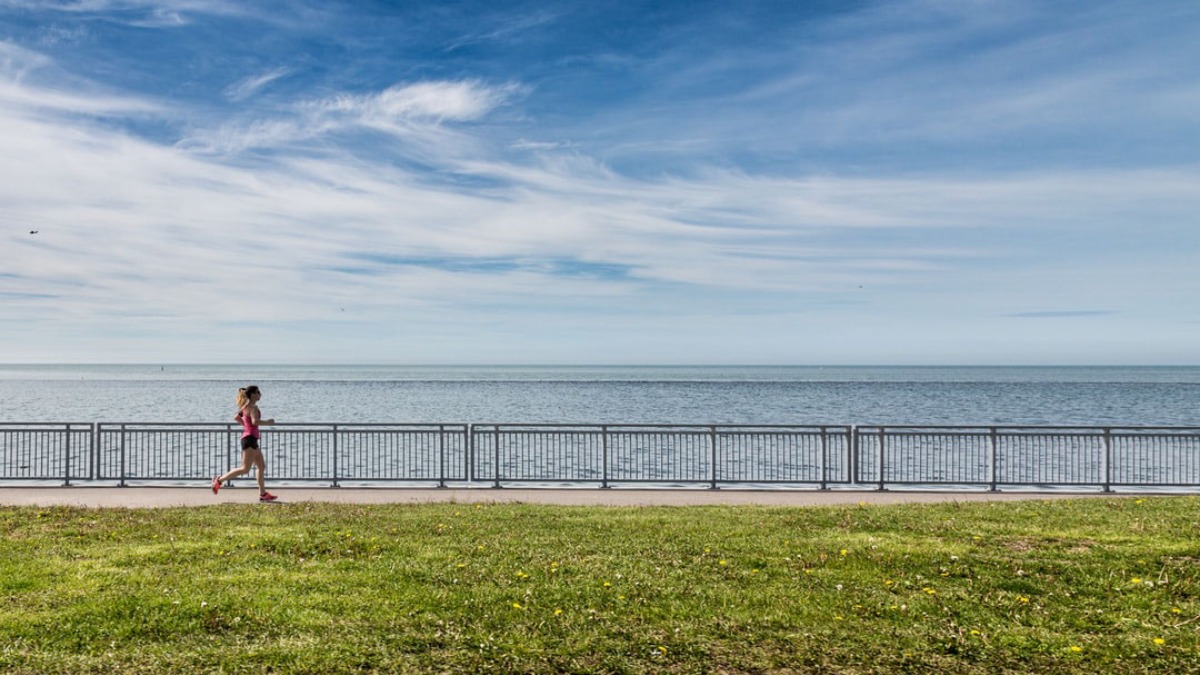
Defining a Safe Exercise Space
Before you start making any plans, it’s a good idea to figure out what options you have available for staying active at this time. In North America the season is turning to Spring which at least gives more people the chance to get outside in the nice weather…and allows you to avoid getting too close to others.
- Train alone when possible (and safe).
- Avoid group workouts.
- Avoid gyms and indoor training facilities.
- If your only option is to use a shared training space, bring gloves and wipes to clean equipment before and after using it.
- Wash your hands thoroughly before and after each workout.
- Do not share training food or fluids.
- Avoid group changing rooms / showers.
Your Indoor Workout Space
Some folks are lucky to have a complete indoor training set up from a trainer for cycling, to a treadmill for running and a Vasa Swim Ergometer for swimming. Even if you only have one of these items, you can still get a great deal of training done using software or online tools such as Zwift and TrainerRoad.
In addition to aerobic training, having a space where you can be active is really helpful. Ideally with a soft / firm surface that’s easy to clean, you can use this space to Stretch, do Yoga and Core or even lift weights. Most of these routines don’t have to take too long to be effective, especially if you alternate Strength with Core, for example.
Endurance Nation has resources available in our workout library on Final Surge for our members, but there are also great resources online to find short and effective routines. If you are new to this type of work, we recommend you start slowly by doing 15-minute sessions three to four times a week, eventually building to three solid 30-minute sessions each week.
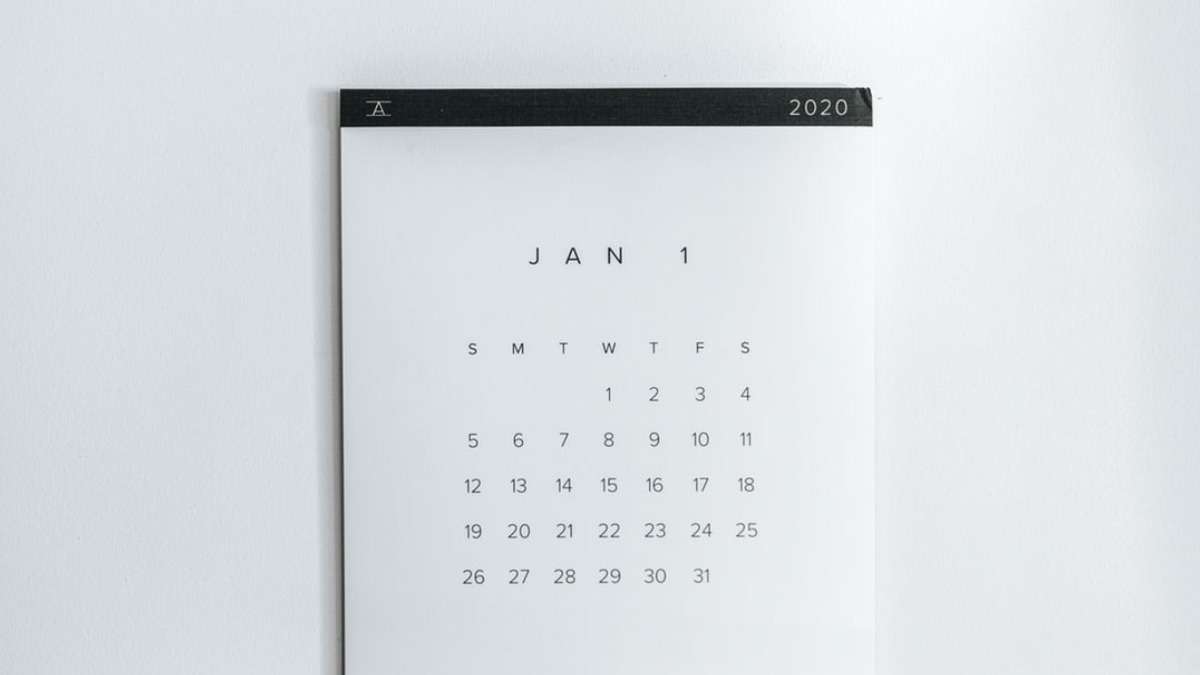
Training & Racing Challenges for the 2020 Season
The uncertainty of what exactly COVID-19 is and can do Is only part of what makes it such a challenging virus to address. Our collective response is part of the solution; and this community approach to addressing the spread of the virus is important. But this response is also complicatIng the situation.
It’s safe to say that very few entities had a “pandemic response plan” ready to go when this all started.
Many small businesses are closing and races are cancelling / postponing events to comply with efforts to mitigate the spread of the virus. This is understandable given the situation but it also can be really frustrating to athletes who are trying to determine what is and what isn’t going to handle.
One of the best ways to deal with this uncertainty is to focus on the things that are in your control. Since you can’t control the spread of virus or the decision of the Race Director, focus instead on your training. Modifying your workload so you can be your best for the next event on your calendar, or for when your event was rescheduled.
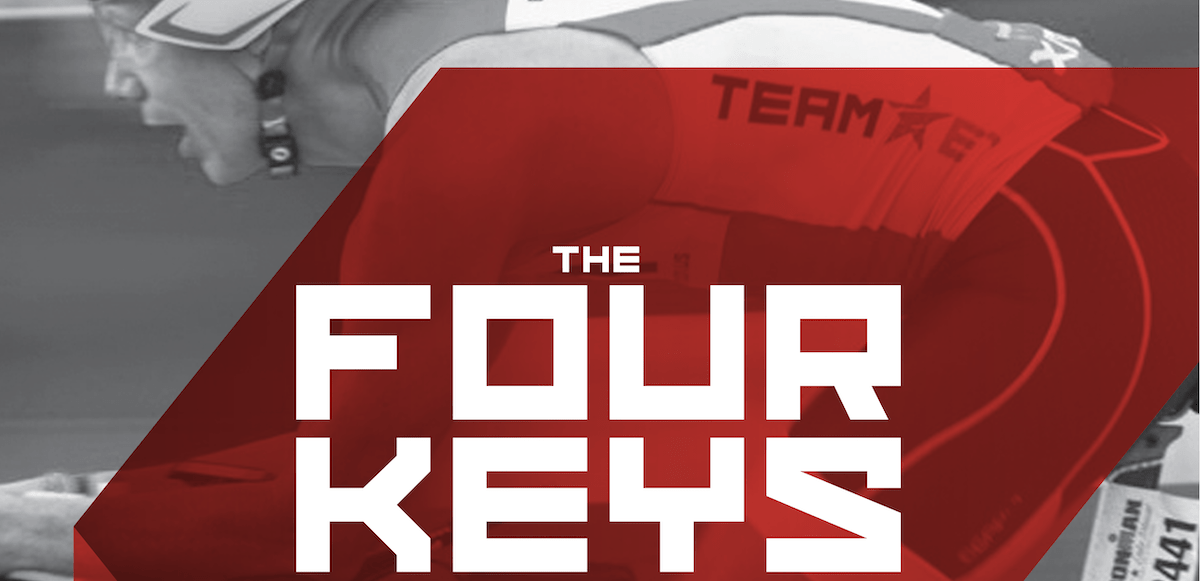
The Fundamental Endurance Nation Rules
Let’s review a few of the foundational principles of endurance training Before we get too specific. This information should also prove useful as you go through the process of updating your training.
Discipline Drives Change
Your ability to achieve your fitness goals is grounded in how good you are at executing your training. We all have things we don’t want to do, and your goal is to make sure that your training doesn’t fall into the “maybe I’ll do that tomorrow” pile. The challenge presented by current events is a great time to build discipline around a smaller, more focused training cycle. This can pay dividends as you move forward.
Consistency Builds Fitness
Regardless of your plan or season goals, the driver of your fitness is consistency. Consistency works across years, training blocks, weeks and in this case…in terms of days. While your training might be disrupted, know that simply staying consistent with the training you can do goes a long way to maintaining your fitness.
Frequency Creates Durability
One of the best ways to make sure you stay consistent is to avoid disruptions to your training due to illness and injury. Inside Endurance Nation this level of resilience is called Durability. Durability is built through frequent training and is a critical part of our early season training methodology. For example, six separate 4-mile runs will create more durability than four spaced out 6-mile runs even though both approaches result in 24 miles that week.
Recovery Makes You Stronger
The question isn’t whether you can do the work. It’s not can you do the work. The true question is how much work can your body absorb? That long run or hard ride you do is only part of the equation. If you have brought too much fatigue to the start of that workout, or too little time to recover after that workout, odds are that session will go to waste. Worse yet, it could potentially affect downstream workouts as well. We prioritize a balanced ratio of work and recovery to keep you healthy all year and ensure you are ready for each workout.
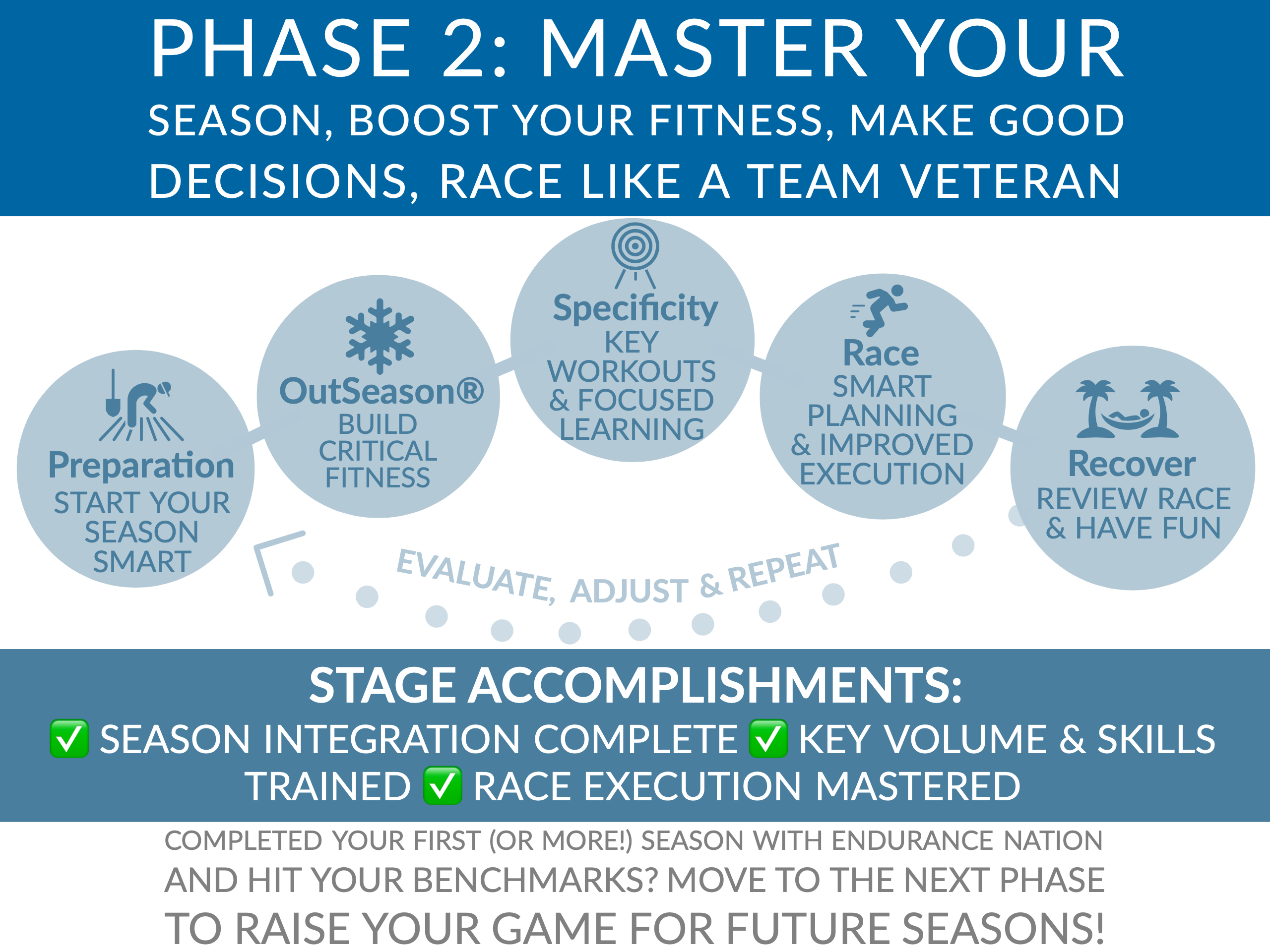
Category One: Your Next Race Was / Might Be Before June 1
Odds are your race isn’t going to happen for reasons outside of your control. Either you know it now or you’re going to find out…Or you’ll have to decide if you want to travel into the unknown in the very near future. If that’s the way you decide to go then your current training program is intact and you can use the FAQs at the end to make micro adjustments to your training.
Unknown Race Status
If the status of your upcoming race is still unclear, then you absolutely need to make sure that you have subscribed to all potential places for race directors updates – this includes email and social media as well. Bonus if you can find a group on social media has focused on that race. Knowing the exact next steps from the director directly is really important – there is always confusion in times of change, so make sure you have clear guidance before taking any action.
In the meantime, the best course of action is to continue training as planned. You have a program, and you have some basic training momentum. Aside from the basic challenges that will arise during the next few weeks, you should be able to stick to the basic program. This should actually be less friction for you then changing up the entire year.
If you have personal or professional demands that make sticking with your current race impractical, follow the guidance below on the best changes to make. At the end of the day your training and racing is meant to be additive. If it becomes something that’s holding you back then we need to reevaluate. Once you do finally determine the status of your event, can return your and use the appropriate guidance below to determine your next steps.
[Race Phase] This was a “Prep” Race and Your “A” Race Is After June 1
As you can see from the graphic above, this part of your season is focused on getting ready for the big race — aka “the training to get ready for the training phase.” At the outset, your year focused on an “A” race with one or two intermediary events that would be important milestones along the way. Without these milestones on the calendar, you can still continue training for the “A” race with some basic modifications.
To be honest, this is actually a pretty good place to be. You haven’t committed to too much volume yet, so you aren’t overtrained. And your main race is still on the calendar (as of now).
Option 1: Continue As Planned with a Solo Time Trial Workout
So no changes other than replacing the scheduled event (with taper and recovery) with a solo time trial effort. This would require ensuring you could replicate the race conditions and effort at race levels.
Option 2: Return to Pre-Race Prep
You can also drop back from the 12-week racing build and use our Pre-Race Prep program to maintain your endurance gains this far. You can do this for up to eight (8) total weeks, and then drop into your regularly scheduled final race plan for the big show. This will allow you to continually adapt to the volume without feeling that typical stress That the Racing Phase contains.
Note: If you decide to drop out of the Race Phase, make sure to test your fitness in a transitional week so we can capture your fitness gains up until this point of your season.
Option 3: Get Back to the Specificity Phase
If You have the chance to see gains in a single sport — such as cycling — Then it could make more sense for you to move from the Race Prep plan to a “focus” plan. These plans prioritize training in a single sport as a means of making you stronger and more competent in a short period of time. These plans last up to six weeks (6) so you can fill a gap before you return to the Race Phase.
Note, if you are a multisport athlete who has already completed a cycling specific focus this year, this time around you can choose a running focus instead.
Single sport athletes who have already completed the specificity Phase should transition to a program focused On shorter distances / harder efforts as you are able. For example, if you are training for a marathon, you would jump back into a 5k for 10k program for approximately six to eight weeks. Yes, you’d be losing some volume but you would make up for that with the quality of the work you are doing so it’s a net win.
[Race Phase] You Were Training for an A Race That’s Now Cancelled
In this case, you know for sure the race has been canceled. The best option here is to finish out the training week you are currently in when you get the news. In the following week you should implement sport specific tests to capture your fitness. Of course, getting into the pool could be problematic but hopefully you can capture your bike and run fitness using the same test protocols from the winter. This is important in order to benchmark just how far you have come since the start of the season. Inside Endurance Nation Test Weeks are also Rest Weeks, so make sure you’re prepared for the tests and have room to recover after them.
Option 1: Creating Your Own Event or Time Trial
Just because your event is Cancelled doesn’t mean you can’t get it done. Depending on the duration and demands of your event, it’s possible you can simply DIY it on your own. This is easiest for single sport athletes, but with a little creativity and luck, multisport athletes can also make it happen.
Essentially you would create the process for completing your event indoors (or outside!) complete with equipment and nutrition. Safety is the most important element, so if you’ll be outside make sure you have picked a good route(s) and that you have accountability with someone else (tracking app, text checkpoints, etc).
While it won’t be the same as racing with others, you’ll be able to effectively close out this chapter of your season by following your current plan. Just as importantly, you’ll be able to retain the overall progression you charted out at the start of the year.
Option 2: Targeting the Next (Post June 1) Event
Moving forward, you will need to adjust your training based off of the next available race in your calendar. Assuming that race is after june 1 and is still in play, the easiest option is to simply reload your season as if the second race was the original target race all along. This will effectively push you back into an earlier phase.
While this can be disheartening, realize that you now have significantly better fitness than when you started the year. Capitalize on the gains that you have made in the new training cycle and aim to race better than you initially anticipated.
Option 3: Taking a Mental Health Break
It’s possible that you didn’t have any other races on schedule, or maybe you are mentally “done” for the season. Everyone is under extreme stress right now, so taking a mental health break from your training Is totally understandable. Hopefully you can still do that test week, after which you can load a basic Durability Plan (or similar Preparation Phase plan) for fitness maintenance.
Endurance Nation Durability Plans come in four installments and are bike-focused, run-focused, or balanced. Choose the plan and begin to follow the progression to maintain your basic fitness levels and enjoy some workout structure. When you are ready, you can return to target that next race closer to the end of the year.
[Race Phase] You Were Training for a Race That’s Been Postponed
Once you know that your race has been postponed, your process is slightly different than the cancelled protocol from above. This is mainly because there are consequences with a longer season that aren’t always apparent at the outset.
The biggest thing you need to watch out for is a season that’s too long now that you’ve moved your race. Athletes don’t do well with races that are too far away; this is why Endurance Nation has many different types of plans with intermediary goals to help folks stay on track.
The longer the focus, the more likely athletes will:
- Over-Train … creating unnecessary Fatigue too early in the year that eventually breaks them down.
- Under-Train … waiting too long to build the baseline fitness require to successfully complete the final 12 weeks of the Race phase.
- Get Distracted … choosing other short term goals that aren’t necessarily aligned with their season. This can be a nice mental break when done correctly. Incorrectly, it can put athletes at risk of jeopardizing their season (injury, accident, etc.).
Warnings aside, the first order of business is to insert the new date into your season plan so we can see how things will be affected on a macro level.
The second step is to decide the priority of your races given the new layout of the season. It’s possible that the early race, formerly an “A” race is now going to be at the end of your year just for fun. Or maybe it will displace your late season race — either entirely or by priority. This is something you can do on your own, or you can work with your coach to shuffle things around.
Once your new season plan is set, you can begin transitioning to the new training plan. Remember that you will need some form of a brief rest, if only to make sure that the body has had a chance to consolidate your gains so far.
At this point you’ll have several options, from resetting to the Pre-Race Phase, the Specificity Phase or taking a break — all of which are outlined above.

Category Two: Your Race Is After June 1
There’s an outside chance of your race happening as scheduled, but there’s a lot of good things that have to happen for that to be the case. For now the macro level schedule of your year remains unchanged, but likely the day-to-day changes to your training options will be where you need to focus your energy.
[OutSeason Phase / 22+ Weeks to Race] Your “A” Race is September or Later
The OutSeason® or winter phase of training inside Endurance Nation is focused on quality over quantity. We are building sport specific strength in either the bike or the run, and swimming generally resides in the background.
You should continue with your OutSeason® / Winter Program schedule as you have outlined. Modify the run workouts to be outside if necessary, planning to be patient on the hills if you have been inside for an extended time.
Be sure to observe at least one day of complete recovery — if not two — to allow for complete recovery from week to week. This will help keep your immune system up and ensure you are ready to handle the workouts to the best of your ability.
One of the most objective ways to track your recovery is to monitor your resting heart rate each morning. The idea here is that you will be able to avoid big swings in the morning HR, which is a reflection of fatigue. If you notice a significant change after some quality training, be sure to adjust your next workout and sleep opportunities accordingly.
[Specificity Phase / 16+ Weeks to Race] Your “A” Race is between June and August
We use the specificity phase to build fitness and fluency in a particular discipline. You should be able to continue following this progression on your own, but it’s still important to be paying attention. Here are your options:
Option 1: Complete the Specificity Phase while Monitoring your Fitness
Continue to follow the training design while tracking potential challenges to your season. You still keep the target you set for fitness and by the time within reason. For this choice you will be effectively waiting out the current situation and hoping there is clarity on your next race before you hit the pre-race phase.
Option 2: Dial Back Intensity, Trading it for Volume
It’s possible that you are already not “in the zone” when you’re training. And the uncertainty of the future has only made things more complicated. In this case, we recommend that you exit the Specificity Phase and start the Pre Race Phase. This has a more traditional volume training structure, meaning workouts are based more on time than intensity. Bonus that moving into the Race Phase will bring back the more traditional balance of the swim, bike and run. You can follow the program up to eight weeks, at which point you will have more information to make a decision about the rest of the year.
Option 3: Find New Intermediary Targets and Goals
Holding a late season race focus means staying motivated and on track across the year. If your early season is being disrupted by the challenges associated with staying healthy, you can try to find some new intermediary goals or targets to keep you on track. This could be as simple as picking up some races on Zwift or picking up a new focus like building core strength with a weekly routine. As long as the work is complimentary to your season goals, you should feel free to incorporate these elements.
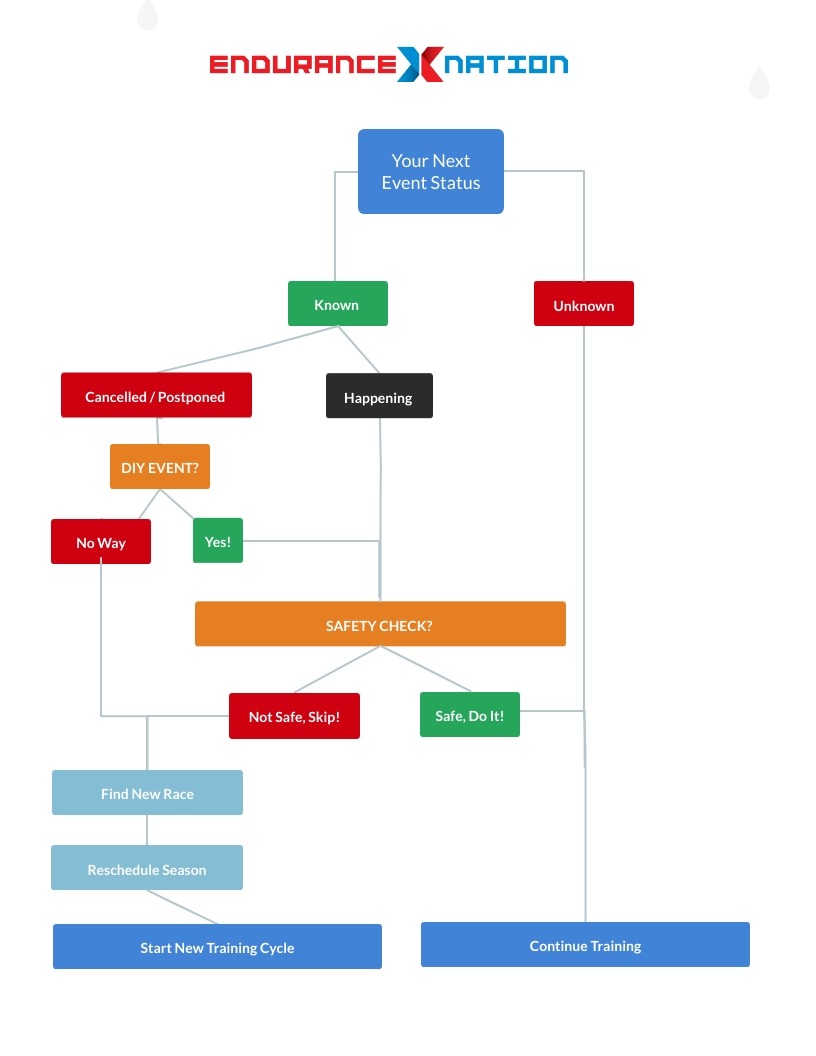
Workout Specifics & FAQs
Our goal here is to be both descriptive (explain why and the intent of the substitute work) and maybe A bit prescriptive (detailing example appropriate exercises and intensity). For Endurance Nation Members, we will indicate areas where you have access to resources inside the Team.
No Swim Access = Combine Aerobic + Strength
It is very difficult to follow a swim program when you no longer have access to a pool. Swimming is fundamentally a skill-based sport. Similar to learning a language, the earlier you start in life and the more often you do it, the better you get. It’s important to note that swimming is often the most social part of an athlete’s training program
The easiest way to replace a swim workout is to combine low-impact aerobic training with some specific strength work. For example, you can replace an hour Swim workout With 45 minutes of aerobic Work and 15 minutes Of swim cords. 15 minutes might sound Insufficient, but your shoulders, triceps and back muscles should be toast!
Swim cords are made out of basic elastic tubing; here are some workout samples for you to Below. So you know, Endurance Nation members have access to our push up and plank exercises online here. One quick note — you should anchor the elastic cord safely around something that will not move or come loose.
Swim Cord Samples:
- 10 Exercises to Build Swim Strength and Stability [here]
- 9 Stretch Cord Exercises To Improve Swim Strength And Technique [here]
- Strength for Swimming (go to cords section) [here]
No Indoor Trainer Access = Get Creative
If you’ve been training out of a gym on a stationary or spin bike, you may find yourself without an option for riding until those facilities reopen. You can replace cycling with low-impact activities such as hiking, brisk walking, or even easy running. If you don’t already have an indoor trainer at home, there is no time like the present to review your options. The popularity of indoor cycling has grown in recent years, and many consider it to be an effective training tool and a safer training environment vs and riding outside.
No Treadmill Access = Get Outside
Losing your treadmill access is the least impactful change, as you can head outside and hit the open road. Hopefully you have been doing some weekend running outside so the transition will be easy. Be sure you wear the proper clothing for the weather and that you pick flat friendly roads/places to run. The nuances of running uphill and downhill can be stressful; we don’t want to overload the system right away.
Another one to make sure you don’t overdo the outdoor running is to dial your training zones back a little bit. Essentially we want the workouts to feel just as hard outside as they did indoors. Technically it should be much easier for you to hit your heart rate zones, and much harder for you to hit your pace zones when you’re outside.
No Strength Access = Get Functional
For those of you who are masters athletes or someone who needs consistent strength training to stay healthy, there are plenty of alternative exercises you can do using your body weight to replace the workout you get in the gym. Rather than just trying to replace the bench press with pushups, you should consider circuit training. This involves alternating body weight exercises with core strength, as an example, to make the training session more challenging and effective. There are some options for you below. Depending on how many times you go through the circuit, the session should take between 20- and 45-minutes maximum.
- 7 Circuit Workouts for Endurance Athletes [here]
- Strength Training Resources from Zoom Multisport [here]
- 12 Days of Xmas Circuit from Big Sky Multisport [here]
Other Questions
- My pool is closed? What can I do to maintain swim fitness?
See our answer above! - Can I replace my swims with running?
Sort of…we’d like a combination of cardio and strength. That 75% of your total swim time and turn that into cardio, and make the other 25% strength based! - I typically run on the treadmill, now my gym is closed. I have to run outside, should I change anything?
See our guidance above on running. - I was going to replace my swimming with an upper body routine, but my gym is closed. Now what?
Functional strength work to the rescue. Review the strenght section ^above^. - Where do I find the strength supplement for Endurance Nation?
Endurance Nation member can find it online in Final Surge under the Plans Section. - Can I add bike time to my strength supplement day? How much bike time? What intensity?
If you are looking for some extra cardio, we recommend spinning in Zone 1 to Zone 2. These aren’t sessions to _build_ aerobic conditioning, just to maintain it. - How can I balance intensity vs endurance in my program on a daily basis using Training Peaks metrics?
If you are familiar with Training Peaks, then you know the concept of TSS (Training Stress Score). Depending on your ability level, you’ll have a ballpark amount of TSS you can earn in a day. Staying in the range whether its for one hour (high intensity) or two plus hours (endurance) will keep you pretty safe. That said, always listen to your body and rest as needed! Here are some basic guidelines:- Advanced Athletes: ~ 100 TSS/day
- Intermediate Athletes: ~ 80 to 85 TSS/day
- Beginner Athletes: ~ 60 to 70 TSS per day
